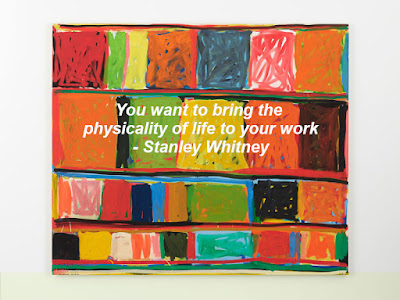A view of my Daily Observations photo archive
Earlier this afternoon, I hit a wall with a new painting that I'm working on. Well, not so much a wall as a door to which I had the right shaped key, but that key had been cut wrong, making entry a little difficult. I started thinking about how to solve the issue that I was having by doing what I usually do; refer to other paintings of mine for clues. I'll often look to other artists' work, as well. This habit has been ingrained in me since high school. It's often hard to turn off this part of my thought process when viewing artwork, especially when the work has some resonance with mine. I try to be aware of my thought patterns in these situations because I can miss out on really looking at the work.
This afternoon's issue was something that came up during the last painting session I had, three days ago, on Friday. Towards the end of that session, I had the unmistakable feeling that I had reached that first point where I didn't know what to do afterwards. The painting needed something to push it forward, but what that was, I hadn't a clue. When I came in today, it was still taunting me, daring me to even think about a solution. After doing a little prep work on three other panels, the possible solution hit: why not take a look through some of the hundreds of photos I've taken that make up my ongoing Daily Observations project? I've done it a couple of times in the past, but using the photos to work out a painting problem is generally nowhere near the top of my list. Anyway, I got on my laptop to look at some shots and within a couple of minutes, I had what I thought was my solution. Not bad at all.
When I make use of a source outside of my own work for problem solving, it's never with the intent of direct copying something into my painting. I'm just looking for some way into a solution, something that will trigger a response within me that will lead to a way forward. In general, it's both a form and a feeling. I'm not looking at the photos and thinking, "Ah, ha, that's the exact thing I need to use!" More often, it takes elements from several sources to comprise a workable solution. It's good that this time, I was able to come up with something that made sense fairly quickly. Now, I have to deal with the new question(s) that my solution brought up.
TM

